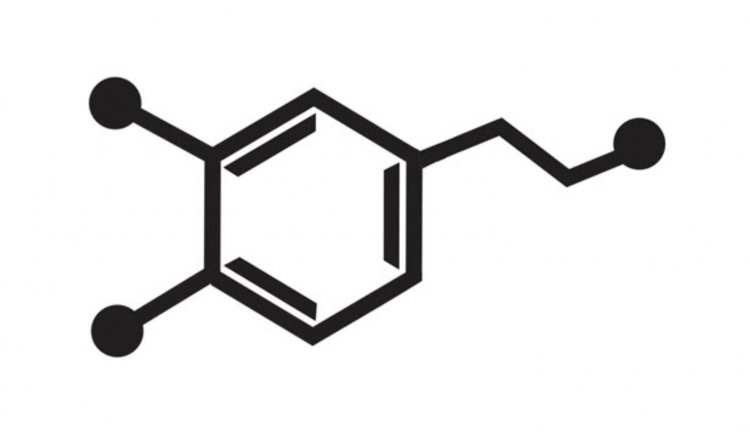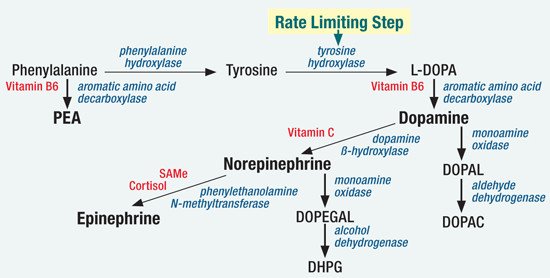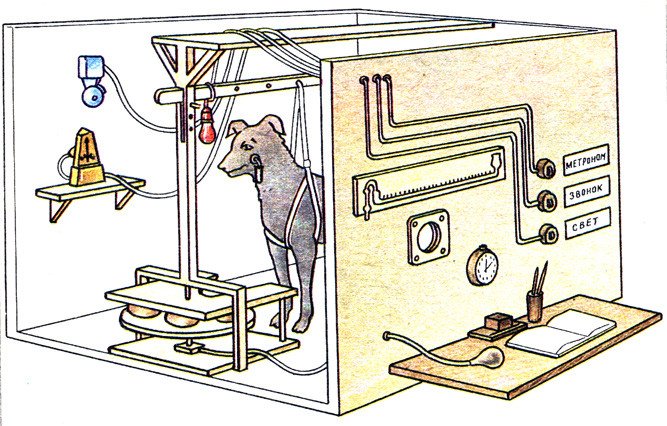One can say that we are in control of ourselves without a doubt. If we need to save up for a vacation or go to a workout, we do it. But it's not that simple. Thousands of years of evolution have never corrected what nature intended. Our behavior is largely dependent on a little molecule called “dopamine.”
Chemical structure of dopamine is 2-(3,4-dihyrdroxyphenyl) ethylamine
Dopamine is a molecule designed to transmit signals between neurons in the central nervous system and other cells.
The chemical structure of dopamine is 2-(3,4-dihyrdroxyphenyl) ethylamine. Its structure is similar to other brain signaling molecules, such as adrenaline, noradrenaline, and melanin.
Neurons that synthesize dopamine are called dopaminergic neurons. Some of them can live up to over 100 years. The older a person is, the worse their cognitive, motivational, and motor functions are, because the dopaminergic system fades over time. Here is an example to compare:
- the number of dopaminergic neurons in young people is about 400 thousand;
- the number of dopaminergic neurons by the age of sixty is 250,000;
- the number of dopaminergic neurons in Parkinson's disease ranges from 60,000 to 120,000.
Their number begins to decrease at the age of 45. Every 10 years they decrease by about 10%. The peak of losses (40-50%) occurs around the age of 88-89.
Pleasure Trap. Briefly
Dopamine is one of the chemical internal reward factors. This substance release induces a feeling of satisfaction, which affects motivation and learning. It is produced during positive experiences such as sex, tasty food, or pleasurable sensations.
Brain areas that localize dopamine neurons:
- hypothalamus;
- substantia nigra;
- ventral cap.
Its location depends on the functions performed. For example, neurons in the hypothalamus regulate libido, aggression, and food motivation; the amount of dopamine in the substantia nigra determines human mobility; and the dopamine produced in the ventral cap is associated with speed of information processing and positive emotions.
One Experiment and the Whole Point of Dopamine
In 2001, Brian Knutson proved that dopamine is not related to the reward or happiness itself, but to the preceding stage – the anticipation. The neurobiologist used the model of Ivan Pavlov's experiment to conduct his research – the formation of conditioned reflexes in dogs. In 1927, Pavlov discovered that dogs would secrete saliva when they heard the ringing of a bell preceding the food intake. This occurred even if there was no food following the sound. The animals associated the ringing with the promise of a snack. Knutson then realized that the brain works in a similar way – it secretes a kind of saliva in the reward anticipation, and then works in a different way.
The Stanford scientist's study proceeded this way. He put the participants in the tomograph and developed a conditioned reaction in them: they were shown a symbol that could make them the winners of a cash prize. All they had to do was press a button.
When people saw the symbol, the brain's reward system was activated, dopamine was released, so the subjects pressed the button as hard as they could. And when they won, the area went silent. The area of the joy of winning was then registered in other nerve centers.
So, Knutson proved that dopamine is responsible for action, not happiness. Knowing this mechanism, there are many triggers we can easily get caught on.
Getting Caught on the Hook
The knowledge of how dopamine controls a person can be used in different ways. Forewarned is forearmed. We have collected the “triggers” or “hooks” that people get “caught on” every day, like little fish in the sea.
Likes. The need for social approval is evolutionarily conditioned, and social media have become its main supplier. One “like” is a tiny dose of dopamine, a fleeting pleasure that multiplies the desire for getting more and more.
Fatty and sweet foods. The more sugar, calories, and fat there are, the more attractive the food is to the reward system.
Free food and drinks. You are often offered something sweet, salty, or caffeinated in the supermarket or in a café. This is how the “dopamine hook” works, provoking the desire to return to this place again.
Alluring aroma. The signature coffee smell, the aroma of caramel or Belgian waffles can easily lure visitors to the right floor of the mall.
Appetizing pictures. Such motivators have a powerful effect on the reward system. When people look at the attractive images of food, they perceive its taste with greater pleasure. You can see that restaurant menus are full of brightly colored pictures of food.
Novelties. The dopamine system pushes you to learn new things, because new information can save your life. That's why many fast-food outlets add new dishes to their menus.
Photo on the homepage: kodelife.ru
Photo on the page: Яндекс Дзен
























